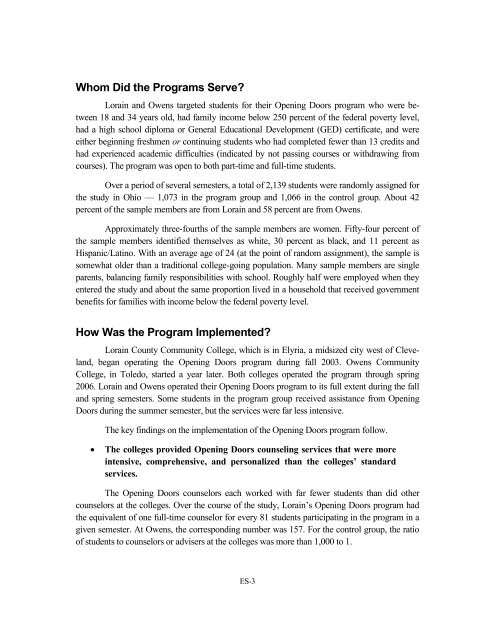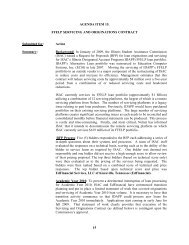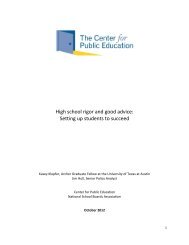MORE GUIDANCE, BETTER RESULTS?
MORE GUIDANCE, BETTER RESULTS?
MORE GUIDANCE, BETTER RESULTS?
You also want an ePaper? Increase the reach of your titles
YUMPU automatically turns print PDFs into web optimized ePapers that Google loves.
Whom Did the Programs Serve?Lorain and Owens targeted students for their Opening Doors program who were between18 and 34 years old, had family income below 250 percent of the federal poverty level,had a high school diploma or General Educational Development (GED) certificate, and wereeither beginning freshmen or continuing students who had completed fewer than 13 credits andhad experienced academic difficulties (indicated by not passing courses or withdrawing fromcourses). The program was open to both part-time and full-time students.Over a period of several semesters, a total of 2,139 students were randomly assigned forthe study in Ohio — 1,073 in the program group and 1,066 in the control group. About 42percent of the sample members are from Lorain and 58 percent are from Owens.Approximately three-fourths of the sample members are women. Fifty-four percent ofthe sample members identified themselves as white, 30 percent as black, and 11 percent asHispanic/Latino. With an average age of 24 (at the point of random assignment), the sample issomewhat older than a traditional college-going population. Many sample members are singleparents, balancing family responsibilities with school. Roughly half were employed when theyentered the study and about the same proportion lived in a household that received governmentbenefits for families with income below the federal poverty level.How Was the Program Implemented?Lorain County Community College, which is in Elyria, a midsized city west of Cleveland,began operating the Opening Doors program during fall 2003. Owens CommunityCollege, in Toledo, started a year later. Both colleges operated the program through spring2006. Lorain and Owens operated their Opening Doors program to its full extent during the falland spring semesters. Some students in the program group received assistance from OpeningDoors during the summer semester, but the services were far less intensive.The key findings on the implementation of the Opening Doors program follow.• The colleges provided Opening Doors counseling services that were moreintensive, comprehensive, and personalized than the colleges’ standardservices.The Opening Doors counselors each worked with far fewer students than did othercounselors at the colleges. Over the course of the study, Lorain’s Opening Doors program hadthe equivalent of one full-time counselor for every 81 students participating in the program in agiven semester. At Owens, the corresponding number was 157. For the control group, the ratioof students to counselors or advisers at the colleges was more than 1,000 to 1.ES-3












